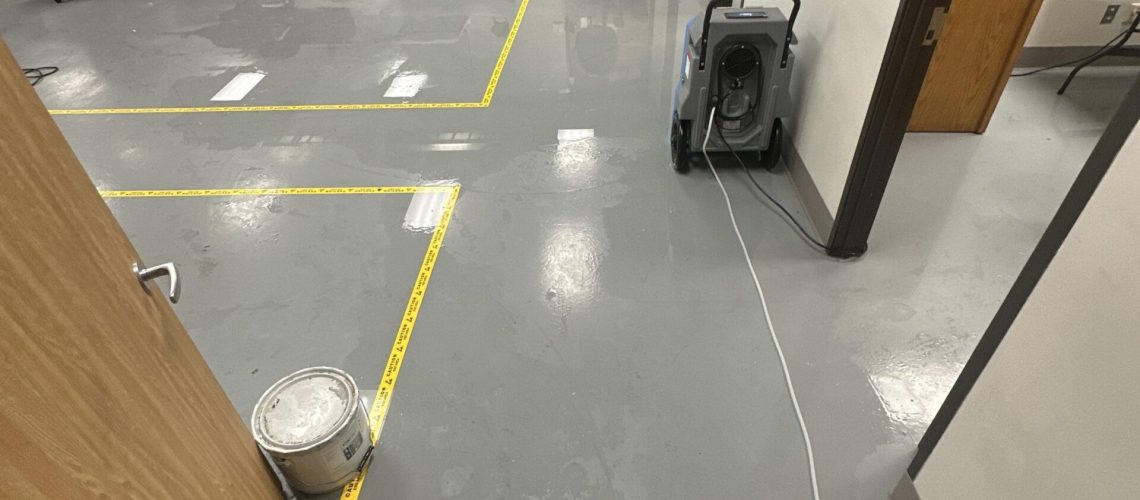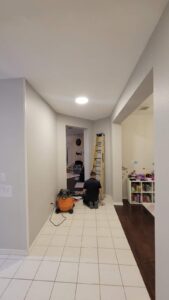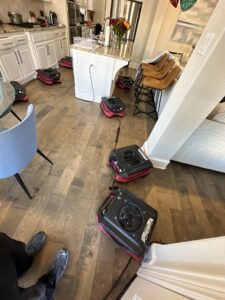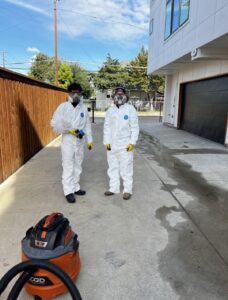Key Takeaways
- Act quickly—waiting too long can make damage worse.
- Avoid using regular household appliances in wet areas.
- Don’t assume an area is dry just because it looks dry—hidden moisture can cause mold and structural issues.
- Always document damage before cleaning up for insurance purposes.
- Some DIY fixes can do more harm than good—know when to call a professional.
- Not all water damage is covered by insurance—check your policy.
- Take preventative measures to avoid future water damage.
At Water Rehab & Restoration, we’ve seen it all—soaked carpets, sagging ceilings, and basements that look more like swimming pools. Water damage is stressful, and in the rush to fix things, it’s easy to make mistakes that can cause more harm than good. To help you navigate the situation, here’s a list of what NOT to do after a water damage incident. Avoiding these missteps will save you time, money, and headaches down the road.
1. Don’t Wait to Act
The worst thing you can do after discovering water damage is nothing. Water spreads quickly and can seep into walls, flooring, and furniture, causing structural damage and mold growth. The longer you wait, the worse (and more expensive) the problem becomes. The first 24-48 hours are critical, so act fast.
What to do instead:
- Shut off the water source (if possible).
- Call a professional water damage restoration company immediately.
- Begin removing excess water using towels or a wet/dry vacuum.
2. Don’t Use Regular Household Appliances in a Wet Area
Water and electricity are a dangerous combination. Plugging in a fan, vacuum, or dehumidifier in a water-damaged area can lead to electrical shock or even a fire.
What to do instead:
- Turn off power in affected areas if it’s safe to do so.
- Use battery-operated fans and dehumidifiers if available.
- Call an electrician if you suspect water has reached outlets or electrical panels.
3. Don’t Assume It’s Dry Just Because It Looks Dry
Just because a surface feels dry to the touch doesn’t mean there’s no moisture hiding underneath. Water can seep into drywall, insulation, and subfloors, leading to hidden mold growth and structural damage.
What to do instead:
- Use a moisture meter to check for hidden dampness.
- Have professionals conduct a thorough inspection.
- Keep drying equipment running for at least 72 hours.
4. Don’t Ignore Mold Growth
Mold can start forming in as little as 24 hours after water damage. Ignoring it or assuming it will go away on its own is a big mistake. Mold can cause health issues and further damage your home.
What to do instead:
- Look for musty odors, discoloration, or fuzzy spots.
- Call a mold remediation specialist if you suspect growth.
- Increase airflow and lower humidity to slow mold development.
5. Don’t Tear Out Drywall or Flooring Without a Plan
It might be tempting to start ripping things out, but improper removal can cause unnecessary destruction and increase costs. Some materials can be saved if dried correctly, while others must go.
What to do instead:
- Consult a professional before tearing anything out.
- Identify salvageable materials.
- Use controlled demolition techniques when necessary.
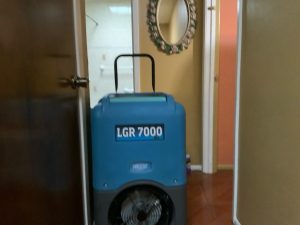 6. Don’t Forget to Document the Damage for Insurance
6. Don’t Forget to Document the Damage for Insurance
Your insurance company will need proof of damage before covering your claim. If you start cleaning up without documenting everything, you might lose out on coverage.
What to do instead:
- Take clear photos and videos of all affected areas.
- Keep records of damaged belongings.
- Contact your insurance company as soon as possible.
7. Don’t Use a Regular Vacuum to Remove Water
Household vacuums are not designed to handle water. Attempting to use one can ruin the vacuum and create a safety hazard.
What to do instead:
- Use a wet/dry shop vac specifically designed for water removal.
- Mop up excess water with towels if necessary.
- Call professionals for heavy-duty extraction.
8. Don’t Overlook Potential Contaminants
Not all water damage is the same. Water from a clean source (like a broken pipe) is different from water that comes from a sewer backup or flood, which can contain harmful bacteria and toxins.
What to do instead:
- Identify the water source.
- Use protective gear when dealing with contaminated water.
- Call a professional if there’s any risk of contamination.
9. Don’t Rely on DIY Fixes for Major Damage
It’s understandable to want to save money, but some situations require professional expertise. DIY drying methods often fail to remove all moisture, leading to bigger problems later.
What to do instead:
- Call a professional water restoration company.
- Follow expert recommendations for repairs and restoration.
- Invest in proper drying equipment if needed.
10. Don’t Assume Insurance Covers Everything
Not all homeowners’ insurance policies cover every type of water damage. Some exclude floods or have specific coverage limits.
What to do instead:
- Review your policy annually.
- Ask about flood insurance if you live in a high-risk area.
- Work with a professional to navigate claims.
11. Don’t Move Back Too Soon
If your home has suffered significant water damage, moving back in too soon can expose you to mold, structural instability, and air quality issues.
What to do instead:
- Wait for clearance from professionals.
- Ensure full restoration is complete before moving back in.
- Get a final moisture test before moving furniture back in.
12. Don’t Neglect Preventative Measures for the Future
Once your home is dry and restored, it’s easy to forget about the ordeal. But taking preventive steps can save you from going through it again.
What to do instead:
- Install water alarms and sump pumps.
- Regularly inspect plumbing and appliances for leaks.
- Keep gutters and drains clear to prevent backups.
Final Thoughts
Water damage can be overwhelming, but making the wrong moves can make things worse. At Water Rehab & Restoration, we’re here to help guide you through the process and get your home back to normal as quickly and safely as possible. If you’ve experienced water damage, give us a call—we’ll handle the hard work so you can focus on what matters most.
Stay safe, act fast, and when in doubt, call in the experts at Water Rehab & Restoration!

